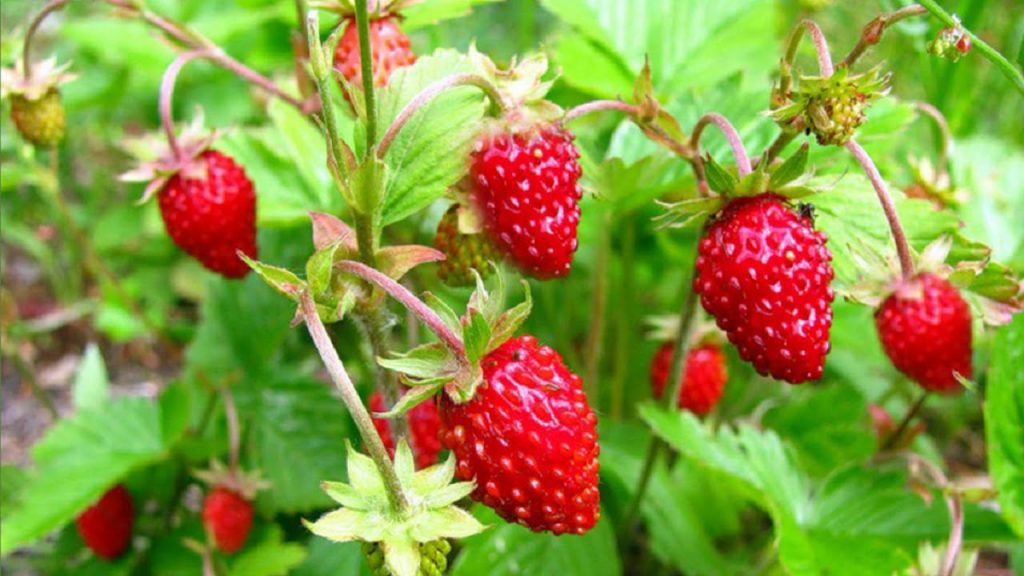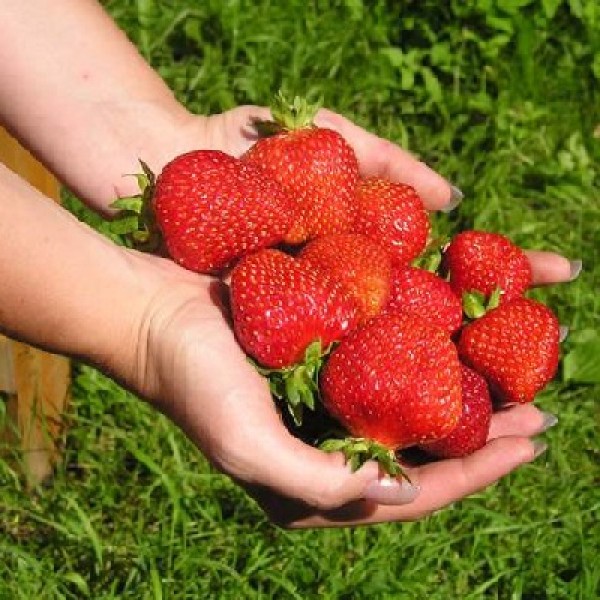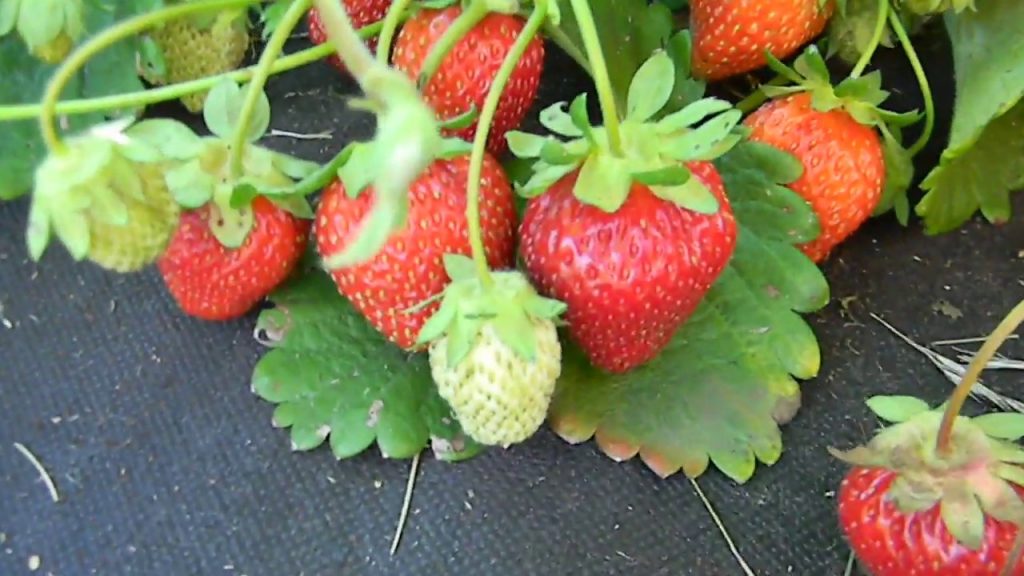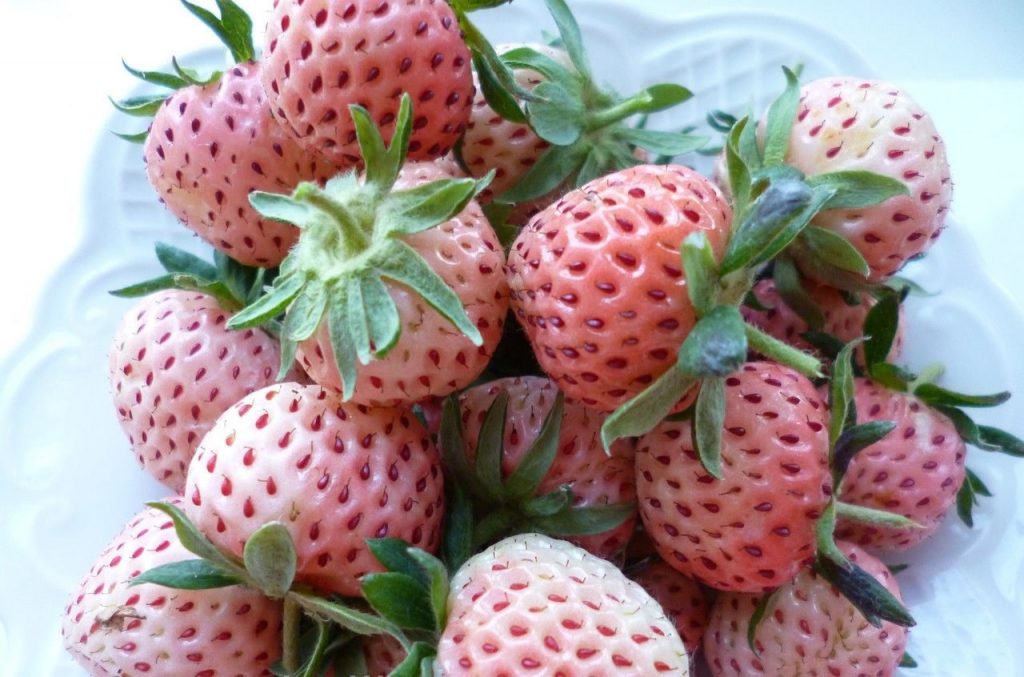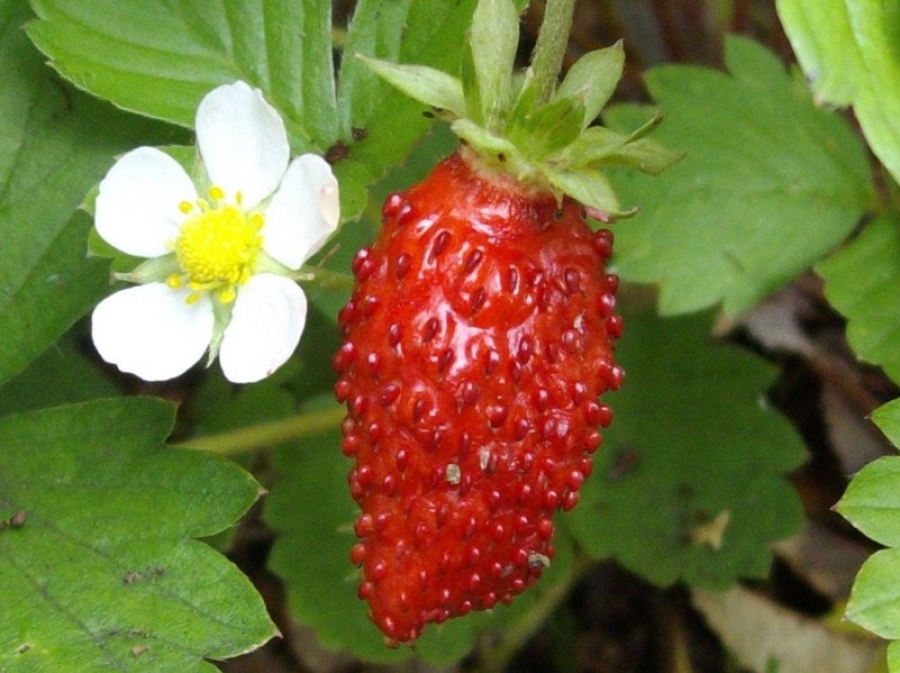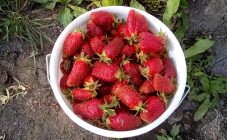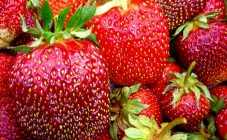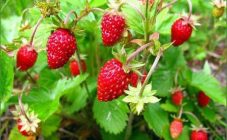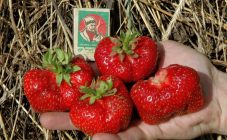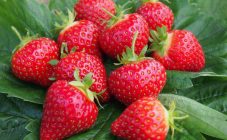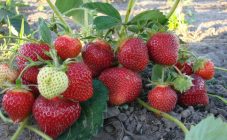Content:
Garden strawberry is one of the most popular crops, because it is a very tasty and aromatic berry. It has beneficial properties due to its high content of minerals and vitamins, including ascorbic acid. But they appreciate it not only for its medicinal effects, but also for its pleasant taste, delicate aroma and decorative properties. Over the years, breeders have bred a variety of strawberry varieties, including frost-resistant ones.
This berry should not be confused with strawberries. The garden strawberry is Fragaria ananassa, that is, the pineapple strawberry. It differs in that its flowers are bisexual. A strawberry is a nutmeg strawberry, or Faragaria moschata. It is a dioecious plant with unisexual flowers. It is sometimes also called musk strawberry. The plant received such names for its delicate aroma. This culture is spread today all over the planet, it is grown both in Europe and in Asia. But the plant, which has received the name of the Chinese strawberry, has nothing to do with the berries that are traditionally grown in European gardens. Therefore, only traditional species will be considered below.
The best varieties of garden strawberries
Garden strawberry varieties can be classified according to different principles. The list of the best varieties usually includes large-fruited varieties. But first you need to understand the terminology.
Strawberries and Victoria strawberries are popular among gardeners, what is the difference between them? In fact, this variety is not included in the official register. The fact is that for a long time strawberries were not bred in the gardens because of the small berries. She began to enjoy popularity after the pineapple strawberry with its large berries appeared (it was the result of natural crossing of different species in nature). She was named Victoria in honor of the British Queen. Gradually, large-fruited strawberries (or nutmeg strawberries that appeared in gardens) were called so. Thus, the strawberry called Victoria is not considered a separate variety today. The name is common, it applies to both large-fruited garden strawberries and strawberries. But the varieties at the same time they may be different.
The best varieties of garden strawberries:
- Strawberry Queen Elizabeth II with large berries weighing up to 45-50 g. It belongs to the number of fruitful varieties, can bear fruit even in the first year after planting. This variety is even suitable for vertical gardening and for growing on slides. The flesh of the berries is quite juicy and dense.
- Temptation. It has an original nutmeg taste. This is a hybrid that can be grown indoors. Berries weighing 30-35 g appear in about 40-45 days after planting. This variety has long stalks, so it is also used for decorative purposes, including vertical gardening. The average yield is 1.5 kg per bush,
- Diamond. This variety was bred at the University of California, but adapted for cultivation in more severe climatic conditions, including in Central Russia. Possesses excellent taste. The average weight of berries is 20 g. The main advantage is resistance to diseases and pests,
- Evie-2. This variety has a very juicy and sweet pulp. The berries are large enough, weighing up to 20 g, and have a beautiful scarlet color.The main advantage of the variety is its drought resistance and high yield - 55 kg from a plot of 10 sq.m. If you are interested in strawberries in the Moscow region, this is an ideal choice in terms of adaptation to climatic conditions.
- Moscow delicacy. In this variety, the fruits are smaller, usually 15-20 g in weight, although sometimes they grow a little more. This variety has a high yield. It is a frost-resistant variety with strong bushes and tall peduncles. The berries are beautifully shaped and have an unusual taste, a bit like cherries.
- Albion. The main advantage of this variety is good transportability and drought tolerance. In the Moscow region and throughout the middle lane, this culture should be covered for the winter, but in the south this is not necessary.
- Ducat. This variety was developed in Poland. This late variety has a high yield, very sweet berries and large flowers.
- Brighton. This is another large-fruited late variety. True, in order for it to bear fruit well, the bushes must be constantly watered and fed throughout the first year.
- Darselect. It is an early variety with very beautiful glossy berries. Its main advantage is disease resistance. It also has a delicate strawberry aroma.
- Knight. These strawberries are not the most winter-hardy, but they are ideal for growing in arid regions. The yield is high, the berries are sweet, dark red.
In the Moscow region, in addition to the aforementioned Evi-2 strawberries, it is also beneficial to grow such varieties as Gigantella and Darselect. Gardeners are often interested in remontant strawberries, the best varieties for the Urals. These varieties include, for example, Pandora with late ripening, large berries and frost resistance, as well as early maturing Sudarushka and Vima Zanta, which ripen at the end of May.
Basic principles of agricultural technology
Strawberry meadow - this was once the name of this berry. It still grows in the fields, differing from garden and forest strawberries by the presence of a greater number of hairs, although all three belong to the same family. A significant part of modern varieties comes from it, many of which are distinguished by their unpretentiousness.
As a rule, descriptions of varieties contain instructions for caring for them, but there are general principles. So, for strawberries you need to find an even, well-lit area. Although this is an unpretentious culture, fertile soil is best suited for it. In swampy and clayey areas, it simply does not take root.
Sowing for seedlings is carried out from January to March, the dates may shift slightly depending on the conditions of the region. At first, these crops must be covered with plastic wrap to create a greenhouse effect. Seedlings are planted in open ground immediately after five real leaves appear. Further watering and feeding depend on the variety. But in any case, they are required, otherwise the bushes will delight with green mass, but not with berries.
Small-fruited varieties are considered less demanding than other varieties. They can thrive and bear fruit well even in the shade on not the most fertile soil. They do not require regular feeding, for the most part they are drought-resistant, and also tolerate frost well. Another advantage is that they do not have a mustache and are distinguished by a high planting density - up to 12 bushes per 1 sq. M.The latter property is reflected in the absolute yield indicator - the yield is up to 2 kg per 1 sq. M, which allows using the plot with maximum benefit. At the same time, white small-fruited strawberries ripen earlier than red ones. Although such bushes give a crop for a long time, they periodically need to be rejuvenated, that is, divided and replanted, and preferably in the fall. Small-fruited strawberries are propagated not only by seedlings, but also by seeds.
Other varieties of strawberries
The best varieties of large-fruited garden strawberries were discussed above. Further, we will focus on varieties that are less common, but interesting in their own way.
In recent years, remontant large-fruited strawberries have been actively replacing all other species. Its main difference is that it will bloom and bear fruit for a long time. At the same time, flowering can last all summer and part of autumn, up to frost. If some ovaries do not have time to develop at this time, they will continue to grow in the spring. In general, remontant strawberries are distinguished by a higher yield. Moreover, the berries will need to be picked at the end of summer.
Large-fruited varieties and the timing of their ripening
The best large-fruited varieties, in addition to those listed above, are:
- Vima Ksima,
- Bereginya,
- Vicoda,
- Daryonka,
- Deroyal,
- Marshmallow,
- Cascade,
- Kent,
- Lambada,
- Marmolada,
- Malvina,
- Marmyshka,
- Rikla,
- Roxanne,
- Rumba,
- Russian size,
- Salsa,
- Tago,
- Festival chamomile,
- Florina,
- Florence,
- Fresco.
It is interesting that Malvina is one of the self-pollinated varieties, but her yield is not very high. Zephyr has a high frost resistance, which would help it to hold out even in Siberia, but only if it is covered with a snow cover, otherwise the bushes will quickly die.
There is another large-fruited variety bred in Germany - Kamrad Pobeditel. It is now rare. It is not often possible to see the Carmen variety in Russian gardens, since it came to the market relatively recently, but in general it is considered a very promising crop due to its resistance to natural conditions.
The ruby pendant does not formally belong to large-fruited varieties, but the weight of the berries can reach 15 g. This also applies to such a variety as Fireworks. But such varieties as Cinderella and Fairy can boast of medium-sized, but very tasty berries.
In this group, ripening times can be very different. For example, Italian Jolie, Nightingale and Mashenka, Sonata and a number of others are mid-season species. But the Marshal begins to bear fruit in early June. The early varieties include the Zarya strawberry and the self-pollinated Eliane variety.
Some types have several modifications. For example, Leningradskaya strawberries can be both early and late. Both varieties are resistant to gray mold.
Not all large-fruited varieties are remontant. An example is the strawberry Amulet. This is a mid-early variety, it will differ from the rest by a very high yield - 2 kg per bush.
The best white-fruited varieties
Every year breeders work miracles. Today there is even a white strawberry that looks very unusual. It is correct to call it white-fruited. Most of the varieties on the market were developed in Europe. For example, this is the Anablanca white strawberry - a popular variety bred in France and adapted to the Russian climate. The berries are shaped like pink hearts. You can understand that they ripen by the way their seeds turn red. Ripe berries weigh about 30 g and have a pleasant aroma with a hint of pineapple. The variety is distinguished by very delicate berries that do not tolerate long-term transportation.
Among other varieties of white strawberry, Pineberry and White Swede should be mentioned. The first of them is distinguished by resistance to diseases and a long period of operation, it bears fruit for up to 5 years. The fruits are unusually yellowish in color. Strawberry White Swede has a conical shape. This variety can be considered a large-fruited strawberry - in warm enough weather, the weight of the berries can be 30-35 g. They have a pleasant taste with pineapple notes and a pure white color.
Small-fruited and neutral-day varieties
Small-fruited strawberry varieties can also belong to remontant. The best varieties in this category:
- Alexandria,
- Yellow miracle
- Seasons,
- Baron Solemacher,
- Ruyan,
- Zolotinka.
Semi-renovated strawberries are also popular. It allows you to get two crops a year, but most of it - up to 85% - is harvested in spring. In late summer and autumn, the harvest is already small. Common varieties:
- Mascot,
- Red Gauntlet,
- Gall's surprise.
Alpine strawberries are often distinguished as a separate variety. But this is not entirely true, this is a whole group of varieties, which contains both small-fruited Rügen and the larger September surprise or the Alpine giant.
There are also neutral day varieties. Such plants form buds regardless of the length of daylight hours. If remontant varieties need rest between fruiting periods, its duration is 8 weeks, then for neutral-day varieties it is much shorter: only three weeks. Berries of such varieties begin to ripen earlier than those of remontant ones, by about a week. These varieties include:
- Selva,
- Mara de Bois,
- Tristan,
- Brighton,
- Moscow delicacy,
- Monterrey.
Theoretically, with good care, these varieties can bear fruit for 10 months a year, only in cold weather you need to take care of their shelter. Tristan is often grown in conjunction with the Laurent hybrid.
Interesting varieties of strawberries with red flowers. True, it would be better to say about them that they are of a deep pink hue. This is, for example, such a hybrid as Roman, Pink Miracle, Pink Panda, and also the already mentioned Tristan. Such varieties have not only decorative properties, but increased vitality.
Today, gardeners have a gigantic selection of varieties and hybrids. There is even a "mustache" bush strawberry, which is considered the easiest to grow. You need to choose by comparing labor costs and productivity, as well as based on the climatic characteristics of the region in which it will grow.
